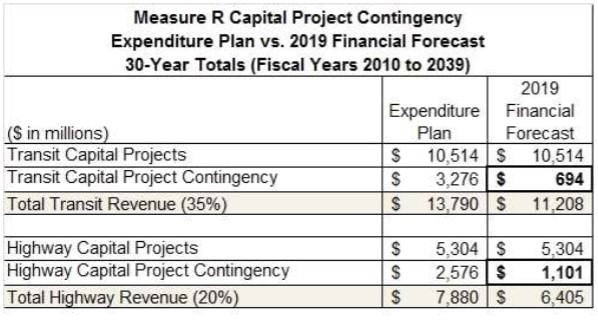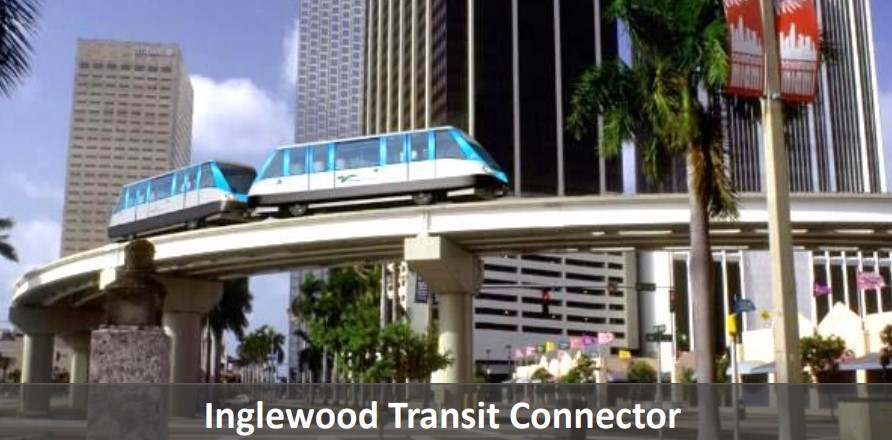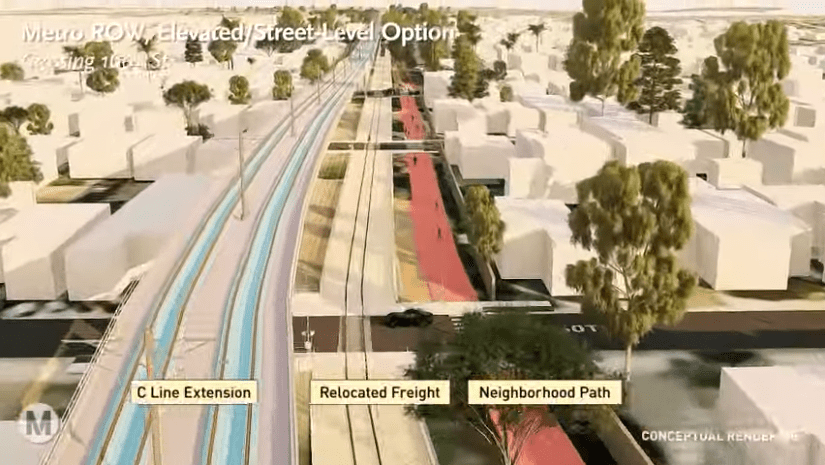Once every decade, the Metro board can amend Measure R funding, shifting funds to better meet current needs.
Metro's L.A. County transportation sales tax Measure R was passed in 2008. Like the 2016 Measure M, Measure R allocates tax revenue to various categories and specific projects as outlined in the ordinance language and expenditure plan.
The ordinance specifies that "Metro may amend [Measure R, including its expenditure plan] ...by a vote of not less than two-thirds (2/3) of the Metro Board of Directors. [...] Not more than once in any ten (10) year period commencing after the year 2019, Metro may adopt an amendment transferring Net Revenues between the Transit Capital Subfund and the Highway Capital Subfund."
At last week's board Planning and Executive Management Committees, the Metro staff report showed that an estimated half-billion dollar transfer from highway to transit "appears necessary." Metro staff portrayed this as a technical administrative move. Overall Measure R sales tax revenue is less than what was forecast, due to the the recession a decade ago. The expenditure plan capital budget remains unchanged, but the reduced tax revenue reduces the contingency funds. Per the ordinance, the contingency funds are, among many purposes, for paying interest on debt.

Metro has already issued debt - and is paying interest on that debt - payable by the transit capital subfunds. The agency has not issued debt from the highway subfund.
If Metro continues under currently approvals/plans, "there is insufficient future sales tax revenue to pay the transit interest." To remedy this, staff are recommending the estimated $500 million from transit capital to highway capital, though the staff recommendation is that this decision be postponed until the financial picture becomes clearer.
It is also possible to transfer funding among projects at this time, especially where completed projects have not used all of their allocation. The staff report identifies three highway projects and one Rapid bus project anticipated to have a surplus.
Board discussion last week mostly focused on the process for coming up with the once-a-decade amendments. Several boardmembers urged a decentralized (in the words boardmember Paul Krekorian) "consensus-building, ground up" process, similar to what Metro used to generate the Measure M spending plan. That process focused on sub-regions, generally led by the local COG (Council of Government.) The board directed staff to recommend a process, to be brought back to the board for input and approval.
Board chair and Inglewood Mayor James Butts stressed the need for any amendments to keep funding within subregions, e.g., if a San Fernando Valley project has a surplus, then that surplus should also be used in the Valley.
Butts is already pushing for the South Bay COG (see October meeting notes) to shift surplus South Bay Measure R highway funds (and Measure M subregional funds) to pay for two projects in the city of Inglewood:
- Crenshaw/LAX Line grade separation at Centinela Avenue. In 2017, Metro estimated this to cost $100-150 million. In 2018, the Metro board approved moving forward with studies to refine the project.
- Inglewood people-mover to connect Crenshaw/LAX Line to the new NFL Stadium - called the Inglewood Transit Connector Project. Butts has stated that this is one of his top priorities as chair. Per COG motions posted at Twitter, Butts is looking for the COG to allocate $250 million of an anticipated $600+ million capital budget (per Envision Inglewood presentation.)
The Measure R ten-year review discussion will continue at the December 5 meeting of the full Metro board, though the final amendments are likely months away.
In the bigger picture, a lot has changed since 2008. The Metro board could, for example, amend the parameters for highway spending, perhaps to align with equity, complete streets, and climate goals. Perhaps, as boardmember John Fasana questioned last week, rail grade separations could be paid for by highway funds, as those projects' primary beneficiaries are drivers.
Though the board are rightly approaching this review with an eye toward investment in the geographic areas each of them represent, somewhat broader thinking will be needed in order to generate forward-thinking changes that will guide Measure R expenditures through at least 2030.







